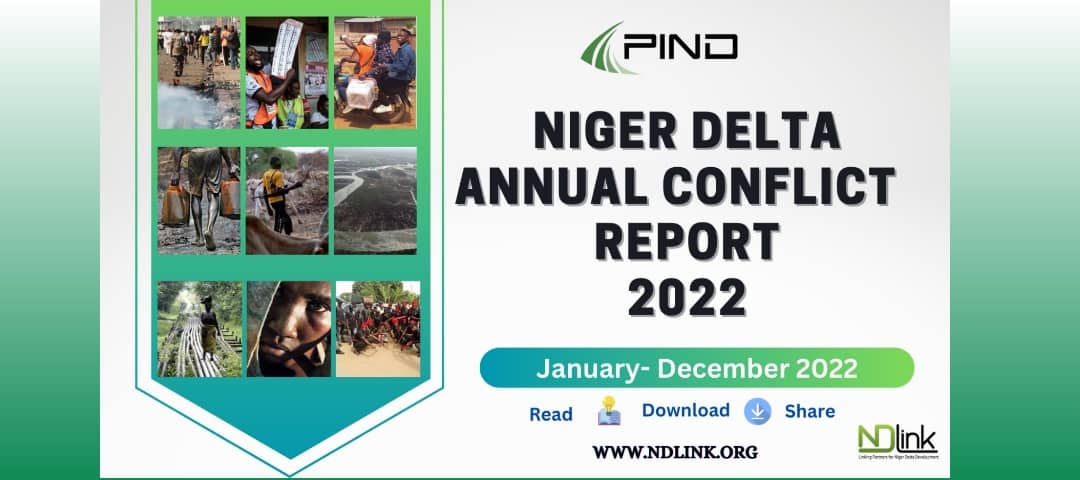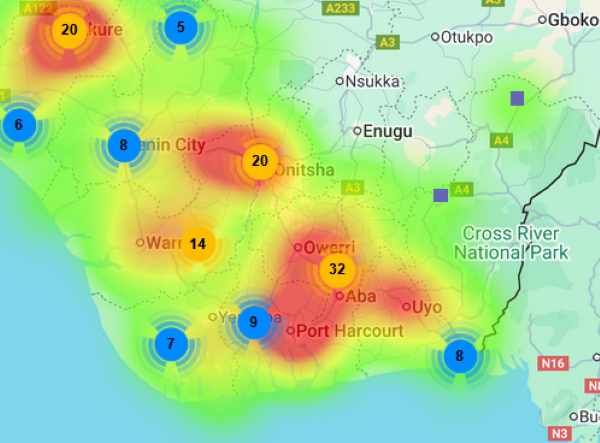
Ogoni Cleanup: ANEEJ to oil majors, value Niger Deltans’ lives over profit-making
May 22, 2023
Niger Delta Weekly Conflict Update: May 21-27, 2023
May 27, 2023EXECUTIVE SUMMARY
The Niger Delta peace and conflict landscape was relatively stable in 2022 compared to 2021. Lethal violence decreased by 0.62% from 1,297 reported fatalities in 2021 to 1,289 fatalities in 2022, as peace actors continue to leverage local capacity for early warning and peacebuilding to catalyze proactive interventions to mitigate the numerous drivers of conflict and instability in the region.
Diverse conflict risk factors contributed to the dynamics of conflict and insecurity during the period. This report examines the trends and patterns of conflict risk and lethal violence, and identifies the drivers and pressures on peace and stability at the regional, state and local levels. Data sources include ACLED (www.acleddata.com), Nigeria Watch (www.nigeriawatch.org), CIEPD (https://ciepdcwc.crowdmap.com), IPDU SMS early warning system, and others.
According to data (www.p4p-nigerdelta.org), organized criminality and communal violence were the primary drivers of conflict and insecurity during the period. Criminality caused 679 reported fatalities during the year, even though there was a 35% and 11% decrease in reported incidents of criminal violence and related fatalities in 2022 compared to 2021.
In contrast, communal violence and related fatalities increased by 60.4% and 24.5% respectively in 2022 compared to 2021. Communal violence caused 200 fatalities in 2022 as against 151 reported fatalities in 2021.
The most prevalent conflict risk and security issues in 2022 include kidnapping, separatist agitation, clashes between government security forces and criminal gangs, mob violence, rival cult clashes, communal conflict over land/boundary disputes including clashes between herders and farmers, political violence, robbery, sexual violence, natural disasters/disease outbreak, domestic violence and killing for organ trafficking and ritualistic purposes.
Illegal oil bunkering/artisanal refining, natural disasters/disease outbreak, clashes between rival cult gangs, separatist agitation, communal conflict, and organized criminality were the most lethal forms of violence in 2022, as measured by the number of fatalities per incident. According to data (see second chart on page 4), on average, every incident of illegal oil bunkering/artisanal refining related violence resulted in at least 22 fatalities. This was followed by natural disasters/ disease outbreak and clashes between cult gangs with an average of four fatalities per incident.
Overall, the most prevalent lethal conflict issues during the year involved organized crime including robbery and killings for ritualistic purposes with more than 360 incidents and over 560 fatalities. This was followed by communal violence and illegal oil bunkering/artisanal refining with over 190 reported fatalities during the period.
There was a decrease in reported incidents of separatist agitation, clashes between cult gangs, and violence against women and girls, while there was an increase in mob violence, political violence, and kidnapping for ransom in 2022 compared to 2021. However, separatist agitation caused more fatalities during the year even though there was a decrease in reported incidents compared to 2021.
There were no significant changes in the Niger Delta peace and conflict landscape in 2022 compared to 2021. According to data (www.p4p-nigerdelta.org), the most violent States during the period, based on the number of reported conflict fatalities, were Imo, Delta and Edo respectively.









